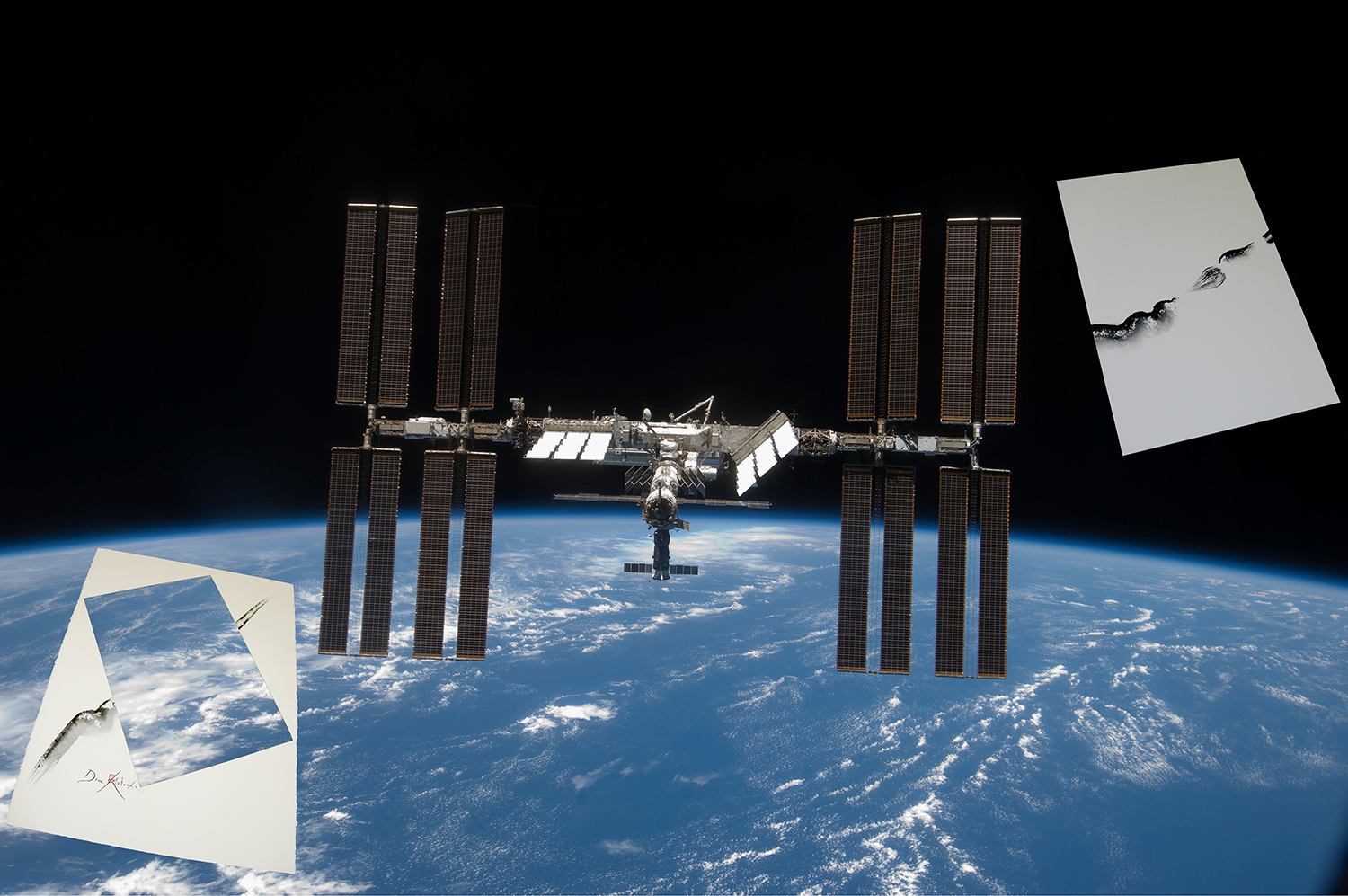
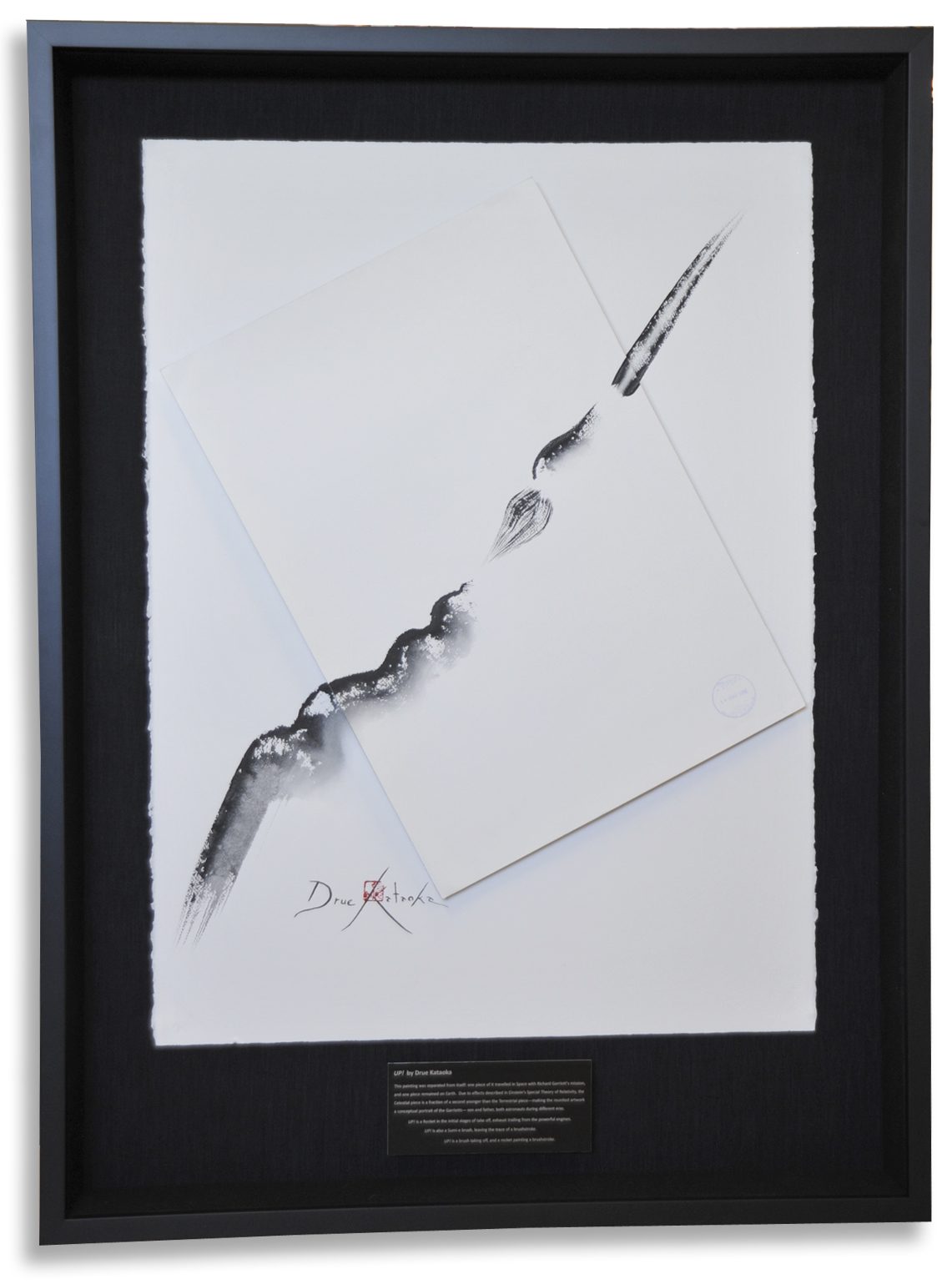
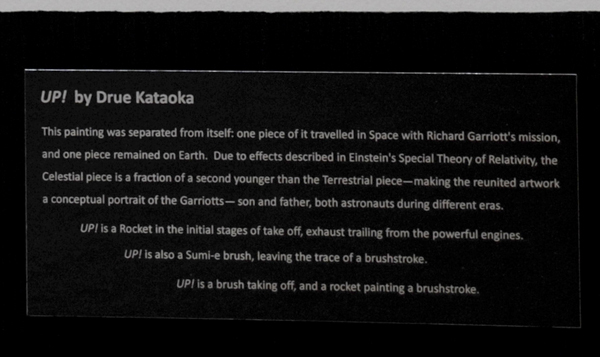
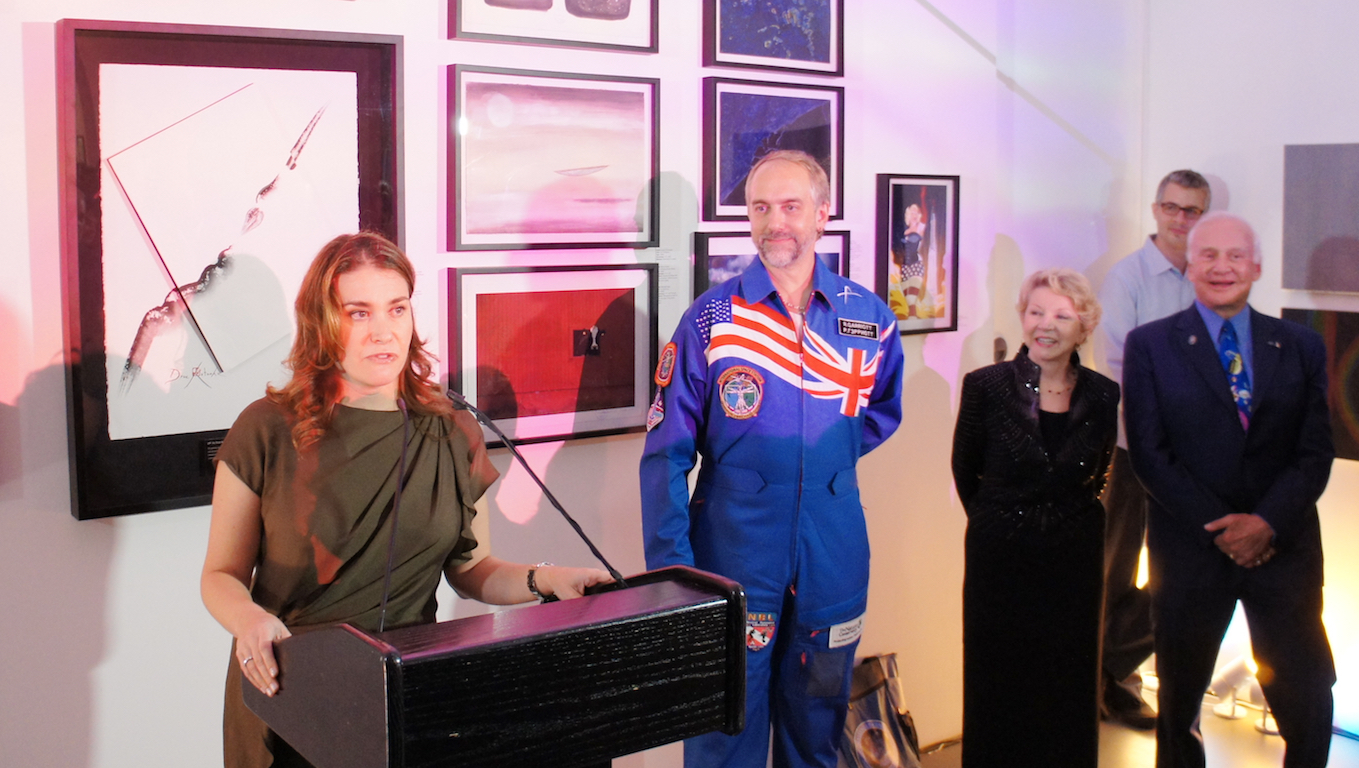
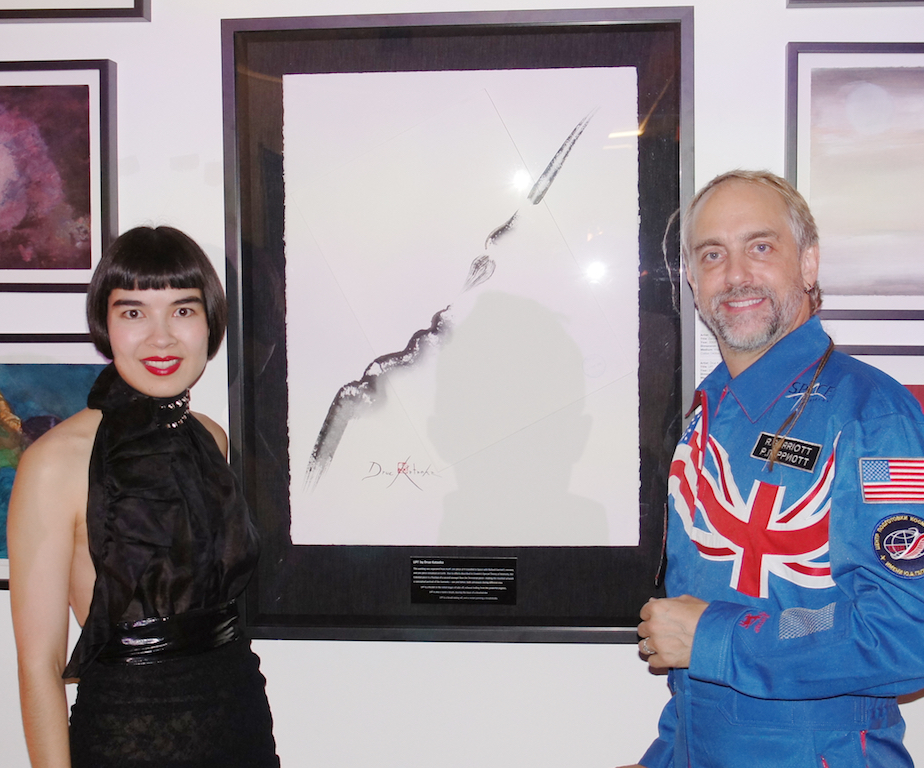
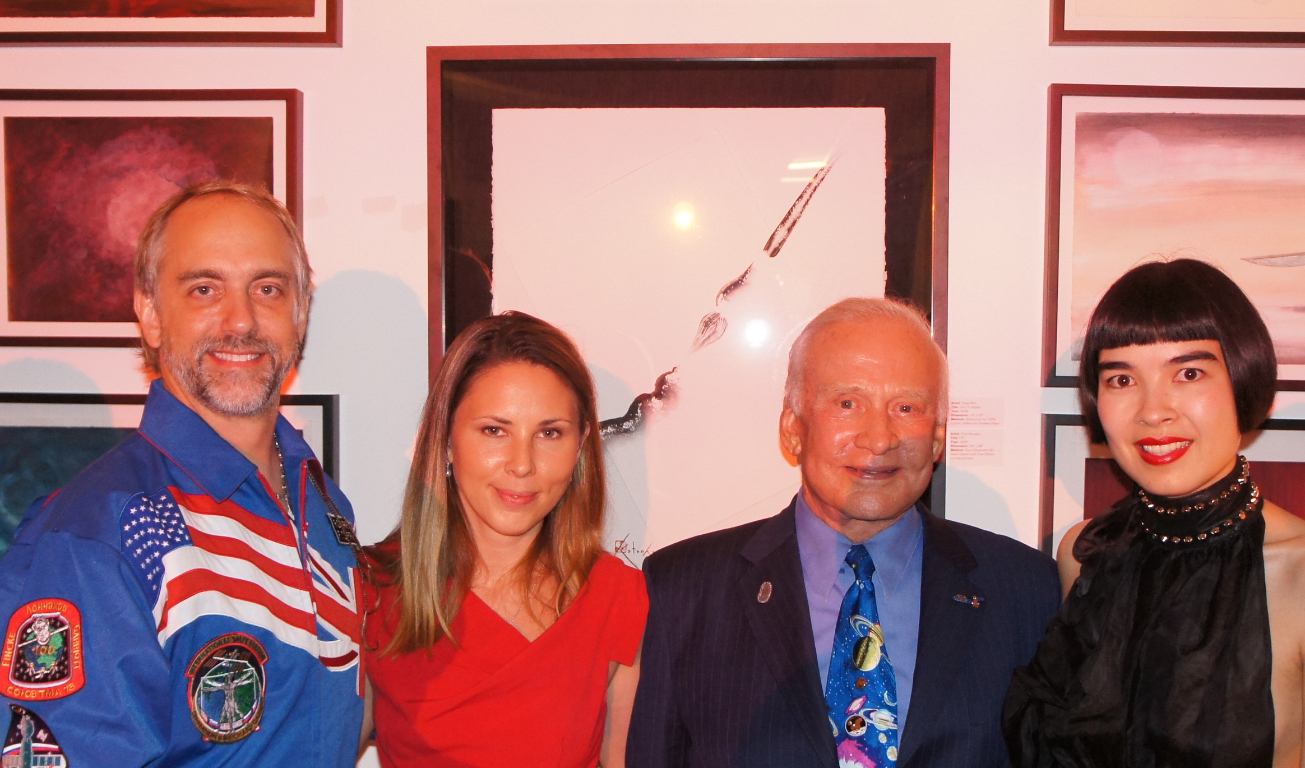
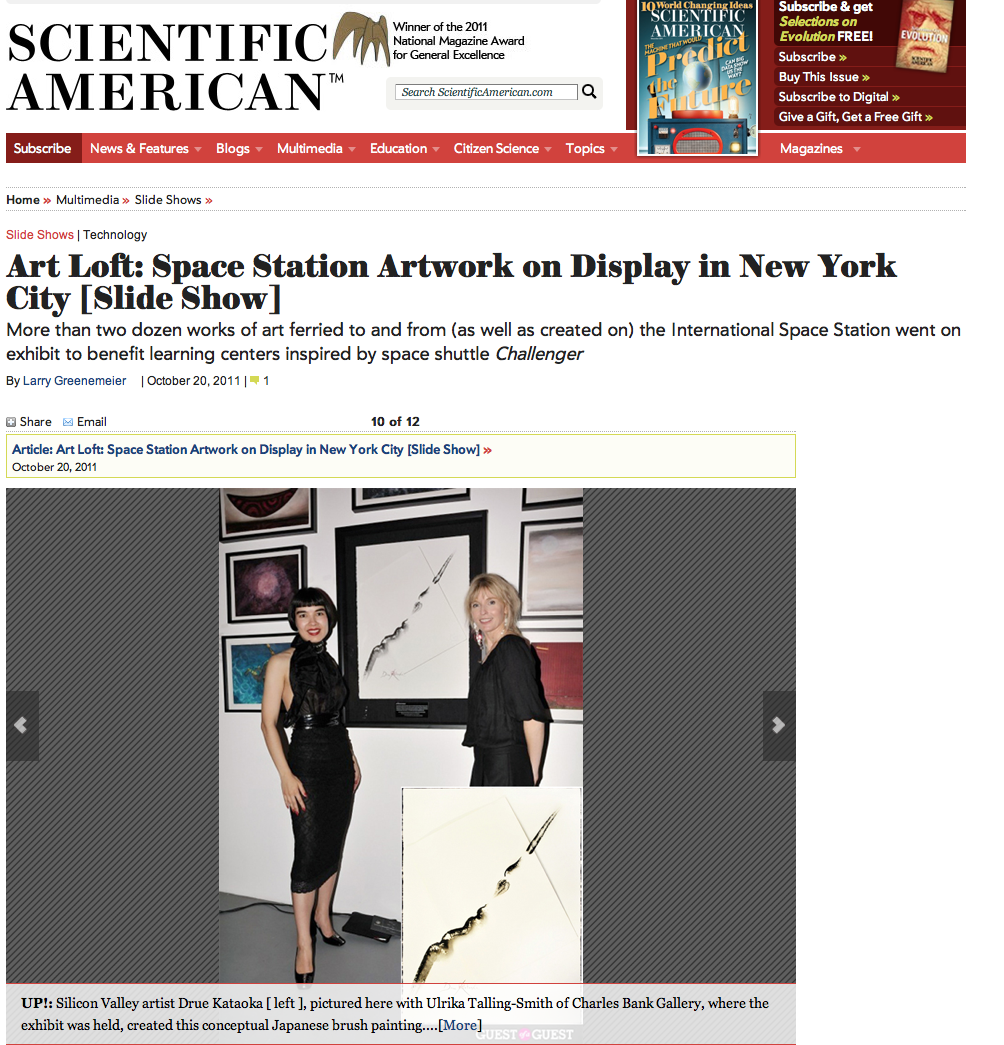

Medium: Sumi ink on mounted rice paper, Special Relativistic effects (Time Dilation)
Dimensions: 88 x 100 cm
Created: 2008
This artwork was created by Drue Kataoka for the first zero gravity art exhibit at the International Space Station and includes ink, paper and relativistic effects. Drue designed the art to be separated from itself: one piece of it travelled in Space with Richard Garriott’s mission, and one piece remained on Earth. Due to effects described in Einstein’s Special Theory of Relativity, the Celestial piece is a fraction of a second younger than the Terrestrial piece— making the reunited artwork two different ages and a conceptual portrait of the Garriotts—son and father, both astronauts during different eras.
UP! is a Rocket in the initial stages of take off, exhaust trailing from the powerful engines.
UP! is also a Sumi-e brush, leaving the trace of a brushstroke.
UP! is a brush taking off, and a rocket painting a brush stroke.
UP! is modern and eternal. This artistic message to the universe carries the transience of the gravity-defying thrust of the rocket into Space and the eternal human quest for beauty and knowledge.

When video game developer Richard Garriott launched into space aboard a Soyuz TMA spacecraft from the Baikonur Cosmodrome in Kazakhstan, he was carrying art as cargo. For more than $30 million, he has become the sixth private citizen to travel into orbit.
The Russian rocket lifted off on schedule at 1:01 p.m. (3:01 a.m. EDT), carrying the first in-space art exhibition. Included is an original brush painting by Drue Kataoka, created for this historic mission.

Like a Space mission, there is a terrestrial and a spatial (cosmic) element to “Up!” There is the part that will go into Space, and the part that will stay on Earth. Drue’s complete original painting is 22″x30″ inches. On board is the 14″x20” part of the original painting selected by Richard
Garriott that has gone (UP!) with him into Space. The rest has been left (as a “Mission Control”) on Earth. Thus the unity of the cosmic and terrestrial parts of the painting will symbolize the duality of the mission, the Space program, and humanity’s love affair with Space.

According to Albert Einstein’s Special Theory of Relativity, objects traveling at very high speeds end up younger due to a distortion of timespace. In the case of this painting, the part of it that travelled at cosmic speeds on the Soyuz rocket ends up being a tiny fraction of a second younger than the part that stayed on Earth.
Richard Garriott’s father, Owen Garriott, used to be an astronaut on SpaceLab, and Richard always wanted to go into space himself one day. He did it as a private citizen on a Russian rocket. So, the younger part of the painting- the part that went into space– is meant to symbolize the younger Garriott, the son. The older part of the painting– the part that stayed on Earth as “mission control,” is meant to symbolize Owen Garriott who stayed on Earth during this mission.

In Sumi-e, an ancient Zen art form, meaning is carried through monochromatic, clean brush strokes—but even more in what lies between these brush strokes, the empty space, the area of the imagination. To see between the brush strokes, open your third eye—your creativity and intuition will guide you.
The image is a rocket in the initial stages of take off, all engines firing, fighting gravity to elevate the human spirit beyond the confines of Earth. It is also the brush of an invisible artist completing a simple but also incredibly nuanced brush stroke. But most of all, it is the intersection of the two—a rocket completing a brush stroke and a brush stroke overcoming gravity to leave Earth. Zero Gravity Art.

Drue invited Mr. Garriott to select the part of the painting that will join him in Space.
Richard Garriott talked about how he chose which part he would cut out and take with him into space, per Drue's invitation.
Garriot: “Actually [it is] a challenging artistic question…
While I enjoyed the “original” position the box was in. I have decided to attempt to make a “cut” that creates a smaller piece which displays the spirit of the whole in a way that makes it perhaps the independent spirited offspring of the larger piece, but still clearly on the same “journey.” Sort of as I am the offspring of my astronaut father. Here is my selection!”
According to Garriott’s specifications, Drue cut the piece selected for spaceflight out of her painting, and sent it to Space Adventures, Ltd. for Space training and then—for launch into Zero gravity. The “terrestrial” part stays as the Mission Control on earth, waiting for the return of the “spatial” piece. When the mission completes, the two parts will be reunited in a charitable auction conducted by Garriott and Zero Gravity Art Inc. The proceeds from the painting’s auction will benefit the Challenger Center, an international, not-for-profit education organization that was founded by the families of the astronauts lost during the last flight of the Challenger Space Shuttle in 1986.